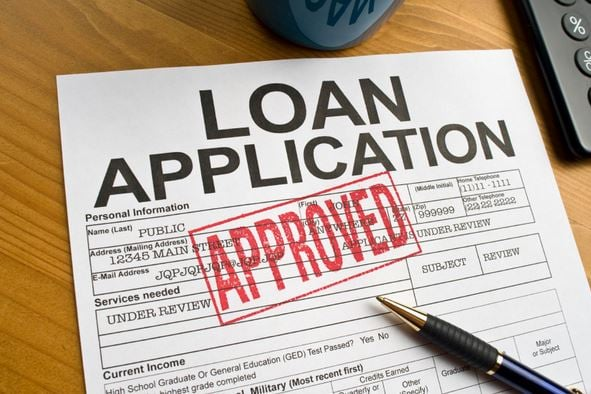
Loans are financial instruments that provide individuals and businesses with access to funds they may not have readily available. They play a crucial role in helping individuals achieve their goals, whether it’s purchasing a home, financing education, or starting a business. However, loans come in various forms, each with its own set of characteristics, advantages, and disadvantages. In this comprehensive guide, we’ll explore the characteristics of different types of loans and delve into the pros and cons of each.
See the types of loans and their characteristics below:
Secured Loans
Characteristics: Secured loans are backed by collateral, such as a home, car, or savings account, which the lender can seize if the borrower defaults on the loan. Because they are secured by assets, secured loans typically have lower interest rates and higher borrowing limits compared to unsecured loans.
Advantages
– Lower interest rates: Secured loans often come with lower interest rates due to the reduced risk for lenders.
– Higher borrowing limits: Since secured loans are backed by collateral, borrowers can usually access larger loan amounts.
– Easier approval: Lenders may be more willing to approve secured loans, even for borrowers with less-than-perfect credit, due to the reduced risk.
Disadvantages
– Risk of asset loss: If the borrower defaults on a secured loan, they risk losing the collateral pledged to secure the loan.
– Lengthy approval process: Secured loans may require more documentation and a longer approval process due to the need to assess the value of the collateral.
– Limited options for those without assets: Individuals without valuable assets to use as collateral may have limited access to secured loans.
Unsecured Loans
Characteristics: Unsecured loans do not require collateral, relying solely on the borrower’s creditworthiness and income to determine eligibility. As a result, unsecured loans typically have higher interest rates and lower borrowing limits compared to secured loans.
Advantages
– No collateral required: Unsecured loans do not put borrowers’ assets at risk, making them suitable for individuals who do not want to pledge collateral.
– Faster approval process: Unsecured loans generally have a quicker approval process since there is no need to assess collateral.
– Accessible to a wider range of borrowers: Unsecured loans may be available to individuals without valuable assets, provided they have good credit and sufficient income.
Disadvantages
– Higher interest rates: Unsecured loans often come with higher interest rates to compensate for the lack of collateral and higher risk for lenders.
– Lower borrowing limits: Because they are not backed by collateral, unsecured loans typically have lower borrowing limits compared to secured loans.
– Stricter eligibility requirements: Borrowers may need to have a higher credit score and income to qualify for unsecured loans compared to secured loans.
Fixed-Rate Loans

Characteristics: Fixed-rate loans have a fixed interest rate that remains constant throughout the loan term, providing borrowers with predictable monthly payments. Fixed-rate loans are commonly used for mortgages and personal loans.
Advantages
– Predictable monthly payments: Borrowers know exactly how much they need to pay each month, making budgeting easier.
– Protection against interest rate hikes: With a fixed-rate loan, borrowers are shielded from fluctuations in interest rates, providing stability and peace of mind.
– Long-term planning: Fixed-rate loans are ideal for long-term financing needs, as they offer certainty over the entire loan term.
Disadvantages
– Higher initial interest rates: Fixed-rate loans may have higher initial interest rates compared to adjustable-rate loans, especially when interest rates are low.
– Limited savings if interest rates decrease: If interest rates decrease after obtaining a fixed-rate loan, borrowers may miss out on potential savings by not being able to refinance at a lower rate.
– Potential for higher overall interest costs: While fixed-rate loans offer stability, borrowers may end up paying more in interest over the loan term if interest rates remain low.
Adjustable-Rate Loans (ARMs)
Characteristics: Adjustable-rate loans, also known as variable-rate loans, have interest rates that can fluctuate over time based on market conditions. These loans typically start with a fixed-rate period before transitioning to adjustable rates.
Advantages
– Lower initial interest rates: ARMs often have lower initial interest rates compared to fixed-rate loans, making them more affordable in the short term.
– Potential for lower interest costs: If interest rates decrease over time, borrowers with ARMs may benefit from lower monthly payments and overall interest costs.
– Flexibility: ARMs offer flexibility for borrowers who expect their income to increase or plan to sell the property before the adjustable-rate period begins.
Disadvantages
– Rate volatility: The interest rate on ARMs can fluctuate, leading to unpredictable monthly payments and potential financial strain for borrowers.
– Risk of payment shock: After the fixed-rate period ends, borrowers may experience a significant increase in monthly payments if interest rates rise, leading to payment shock.
– Limited protection against rising interest rates: While ARMs offer lower initial rates, borrowers are exposed to the risk of rising interest rates, which can increase their monthly payments and overall borrowing costs.
Conclusion
Loans come in various forms, each with its own unique characteristics, advantages, and disadvantages. Whether you’re considering a secured loan for a major purchase, an unsecured loan for quick access to funds, or a fixed-rate loan for predictable payments, it’s essential to understand the features of each loan type and evaluate your financial situation carefully. By weighing the pros and cons of different loan options and choosing the one that best fits your needs and circumstances, you can make informed decisions and effectively manage your borrowing responsibly. Remember to compare loan offers from multiple lenders, read the terms and conditions carefully, and consult with a financial advisor if needed to ensure you’re making the right choice for your financial future.


